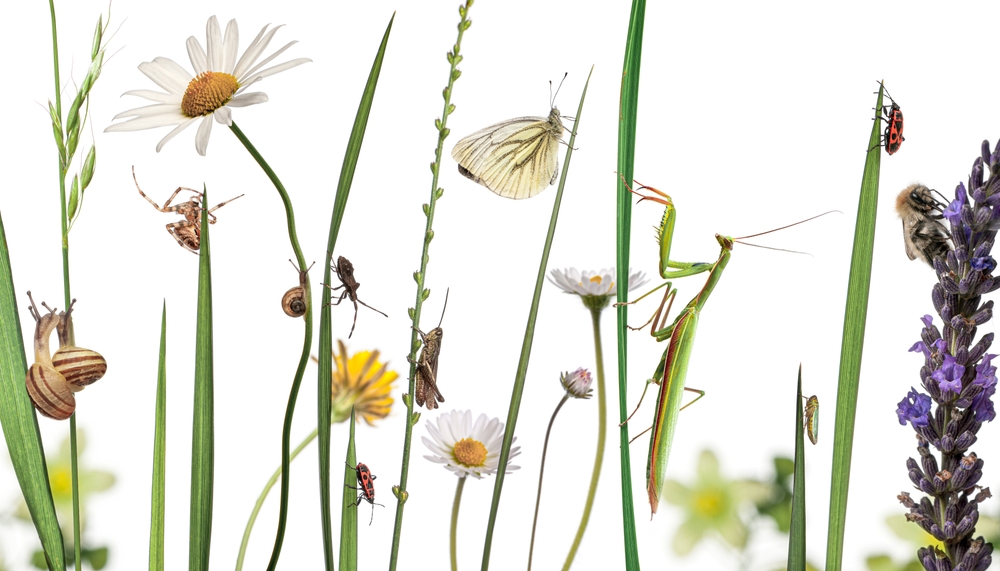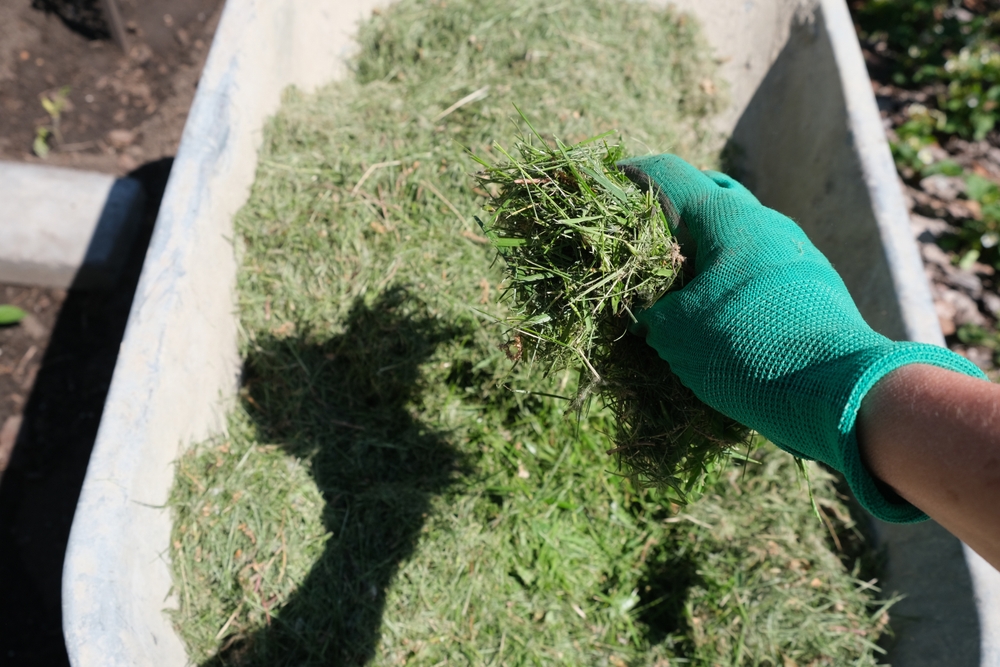
Image Source: Shutterstock.com
Here’s the thing about winter: while you’re bundling up and sipping hot cocoa, there’s an entire hidden world beneath your feet getting cozy for the season. That soft, earthy layer of mulch around your garden beds? It’s not just keeping your plants warm—it’s the equivalent of a five-star winter resort for bugs. Many insects use mulch to survive the cold months, hunkering down until the weather warms up. The tricky part is figuring out who’s hibernating in there before they wake up and make your garden their springtime buffet.
So grab your gloves, a curious mind, and maybe a magnifying glass—it’s time to learn how to spot overwintering insects before they make themselves a little too comfortable.
Why Mulch Is Bug Paradise
Mulch is basically the insect version of a heated blanket. It traps moisture, regulates temperature, and provides protection from frost, predators, and harsh winds. Beneath that layer of shredded bark or straw, it stays a few degrees warmer than the open air—a perfect survival zone for overwintering critters. The dark, damp environment also creates pockets of organic matter that bugs can feed on while they wait out winter. In short, if you were a beetle or a spider, mulch would be your dream real estate.
The Tell-Tale Signs of Hidden Guests
Most overwintering insects are experts at hiding, but they leave subtle signs if you know what to look for. Start by gently lifting small sections of mulch near your plants—you might see movement right away. Small tunnels, webbing, or clumps of soil that seem oddly packed together often indicate an insect has set up camp. Sometimes, you’ll find hollowed-out stems or egg casings clinging to bits of bark. Even a small cluster of fine silk or strange debris could mean a spider, moth, or beetle larva is using your garden as its winter hideaway.
Meet the Regulars: Common Overwintering Bugs
Every garden has its winter guests, and some are friendlier than others. Ladybugs, for example, love to nestle under mulch and are actually beneficial—they’ll help you fight off aphids once spring arrives. On the other hand, pests like Japanese beetles, cutworms, and certain types of weevils also take shelter there, just waiting to chew through tender new leaves when the weather warms. You might even find centipedes and earwigs using the same shelter for their own purposes. Not all of them are harmful but knowing who’s hiding out helps you decide whether to let them stay or show them the exit.
How to Spot Insect Eggs and Larvae
You don’t always see adult insects during the cold months—sometimes it’s their eggs or larvae that do the overwintering. Look closely at the undersides of mulch pieces or decaying leaves. Insect eggs often appear as tiny round clusters, sometimes coated in a waxy or fuzzy substance. Grubs and larvae, especially those of beetles and moths, tend to curl up in a C-shape just below the surface of the soil. If you find small, white or tan worms that seem sluggish, you’ve probably found overwintering larvae taking their winter nap.
Movement Happens When It Warms Up
Here’s a fun (and slightly creepy) fact: even in the middle of winter, insects can start moving around during warm spells. When temperatures briefly rise, they might crawl closer to the surface of the mulch to take advantage of the heat. You’ll often notice more activity after a few mild days—tiny beetles, ants, or even spiders scurrying around as if testing the air. It’s not a full wake-up yet, but a sign they’re alive and well. Catching this early activity can give you clues about what types of insects you’ll be dealing with come spring.
The Role of Beneficial Insects
Not every overwintering bug is a problem. Many are the unsung heroes of your garden, ready to emerge in spring and help control pest populations. Ground beetles, for instance, hibernate under mulch and feast on slugs and caterpillars when the temperatures rise. Predatory spiders and lacewings also spend the winter tucked safely in the mulch, gearing up for their annual pest-control mission. Before you clear everything away, take a moment to identify whether your hidden insects are friends or foes—because evicting the good ones could set your garden back.
Managing Mulch to Keep Things Balanced
The goal isn’t to create a bug-free garden—that’s impossible—but to maintain a healthy balance. Regularly turning over your mulch during fall and early winter can disrupt pest life cycles without harming beneficial insects too much. If you notice large clusters of eggs or larvae, gently remove that section and dispose of it. Avoid piling mulch too thickly, as that creates even more appealing hiding spots for pests. A two- to three-inch layer is enough to protect your plants without turning your garden into an insect condo complex.

Image Source: Shutterstock.com
Seasonal Timing Matters
When you inspect your mulch depends on the season, and timing makes a big difference. Late fall is the best time to reduce overwintering pests—many insects haven’t fully gone dormant yet, so disturbing their shelter can discourage them from staying. Early spring inspections can also help you catch survivors before they start feeding and reproducing. If you notice more insect activity as temperatures warm, lightly raking the mulch and letting it dry out can make the area less hospitable. Seasonal vigilance turns into a year-round habit that keeps your garden thriving and your pests in check.
When to Call for Backup
Sometimes, no matter how attentive you are, your mulch becomes a bustling winter city for insects. If you find large populations of grubs, weevils, or other destructive bugs, it might be time to call in a pest control expert. Professionals can identify species accurately and suggest targeted, eco-friendly treatments that won’t harm your plants or beneficial insects. Don’t wait until spring infestations take over—it’s easier to manage pests while they’re still dormant. Think of it as spring cleaning… just a few months early and underground.
The Secret Life Beneath the Mulch
Underneath that neat layer of mulch lies a world most gardeners never see. Some of it is helpful, some of it’s harmful, but all of it is part of the natural cycle that keeps your garden alive. Learning how to spot overwintering insects isn’t just about pest control—it’s about understanding the tiny ecosystem that lives right under your boots. With a little observation and care, you can strike the perfect balance between protecting your plants and letting nature do its thing.
Have you ever uncovered a surprising winter guest in your mulch? Share your stories, tips, or discoveries in the comments below.
You May Also Like…
8 Insects That Actually Help in Fall Gardens
Why Leaf Piles Attract Beneficial Insects
9 Fall Garden Pests That Arrive Out of Nowhere
7 Innocent-Looking Shrubs That Harbor Invasive Insects
10 Natural Ways to Control Pests in Your Vegetable Garden
Leave a Reply